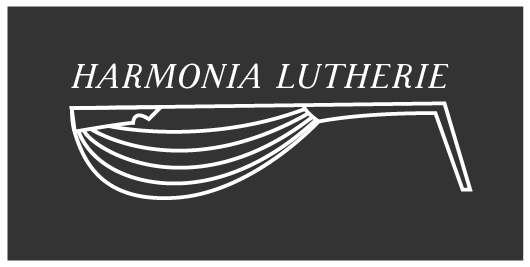
Strings were historically made of animal gut, usually from the small intestine of sheep (sometimes in combination with metal) and are still made of gut or a synthetic substitute, with metal windings on the lower-pitched strings. Modern manufacturers make both gut and nylon strings, and both are in common use. Gut is more authentic for playing period pieces, though unfortunately it is also more susceptible to irregularity and pitch instability due to changes in humidity. Nylon offers greater tuning stability, but is seen as anachronistic by purists, as its timbre differs from the sound of earlier gut strings. Such concerns are moot when more recent compositions for the lute are performed.
Of note are the catlines used as basses on historical instruments. Catlines are several gut strings wound together and soaked in heavy metal solutions to increase the string mass. Catlines can be quite large in diameter compared to wound nylon strings of the same pitch. They produce a bass that differs somewhat in timbre from nylon basses.
The lute's strings are arranged in courses, of two strings each, though the highest-pitched course usually consists of only a single string, called the chanterelle. In later Baroque lutes two upper courses are single. The courses are numbered sequentially, counting from the highest pitched, so that the chanterelle is the first course, the next pair of strings is the second course, etc. Thus an 8-course Renaissance lute usually has 15 strings, and a 13-course Baroque lute has 24.
The courses are tuned in unison for high and intermediate pitches, but for lower pitches one of the two strings is tuned an octave higher (the course where this split starts changed over the history of the lute). The two strings of a course are virtually always stopped and plucked together, as if a single string—but in rare cases, a piece requires that the two strings of a course be stopped or plucked separately. The tuning of a lute is a complicated issue, described in a section of its own below. The lute's design makes it extremely light for its size.
Prior to World War II, all “glue” was hot hide glue. This glue has a history documented to 8000 BC, roughly.It is made of rendered-down animal hides. Hide glue is the first choice for musical instrument makers, antique conservators and traditional woodworkers.
Hide glue shrinks as it dries and does not suffer from “creep.” It is largely transparent to stains and finishes. It can be cleaned up any time after it is applied or dried! It washes out of clothing and rags and, more importantly, it is reversible and easily repaired. The swarf does not clog tools or sandpaper. If you make a mistake, heat it to 145º and it becomes thermoplastic and can be disassembled or repositioned.
You can easily do “rub joints” without clamps by applying hide glue to both edges of properly joined boards and rub them together, leave them, and the next day they will be tightly joined. Hammer veneering — laying veneer without clamps — is also accomplished with hide glue.